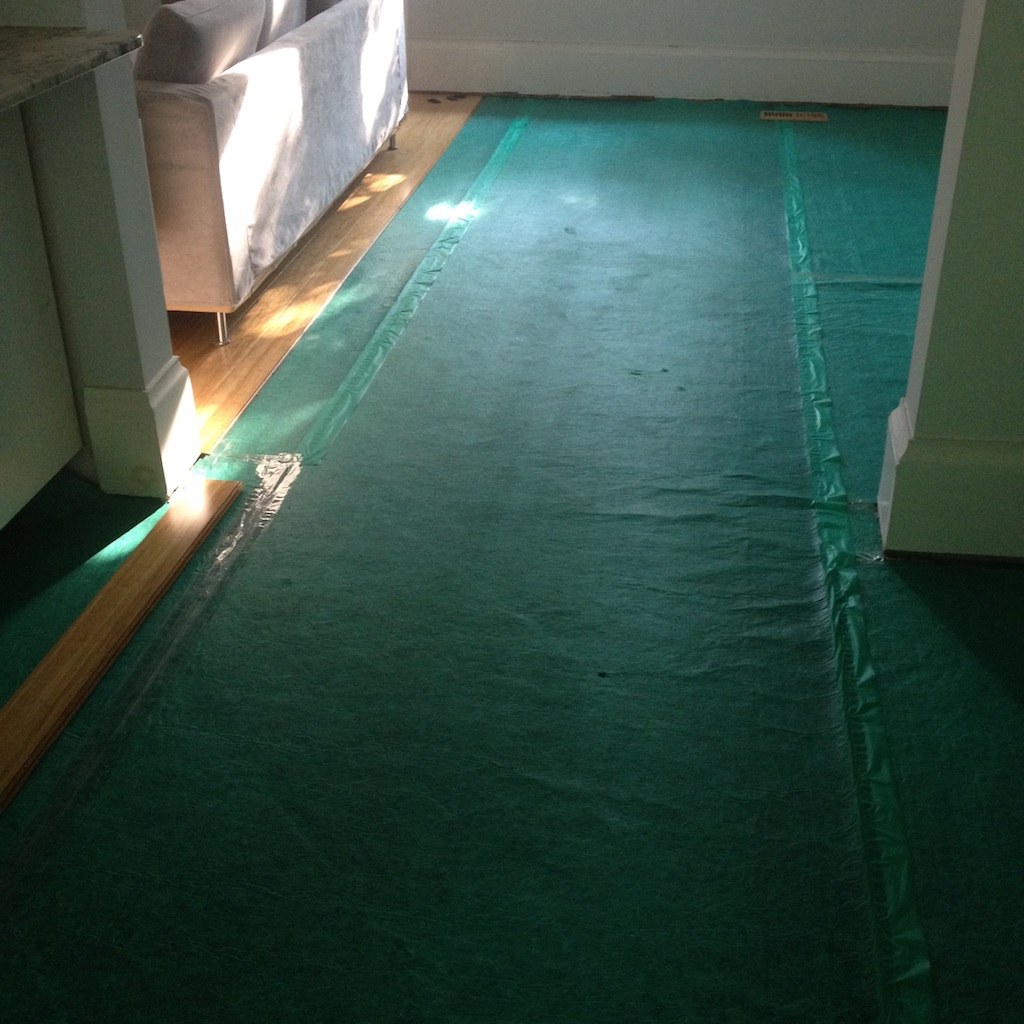Anyone who has ever lived in an apartment with an upstairs neighbor understands how annoying it can be when they walk across the room, especially if that neighbor is a little heavy-footed in the way they walk. There’s not much that can be done about this when living in an apartment, but there’s no reason to put up with it in a home, if it can be avoided. Noisy kids upstairs don’t have to mean a headache downstairs.
Another place to avoid it is in an office. Many older homes eventually end up being refurbished into offices for lawyers and other professionals. Eliminating overhead noise in this sort of environment not only keeps workers happy, it helps them work more efficiently, as the noise isn’t distracting them.
While there is no perfect solution for noise, there are ways of cutting it down and making it bearable. Insulation, of the type that is put in walls and attics to hold in the heat also works to cut down the transmission of noise. But installing insulation requires removing drywall, either to get into the walls or to get into the ceiling. It’s a bigger job than most of us want, especially when there are alternatives.
The best alternative to help with dealing with those heavy-footed people upstairs is installing acoustic underlayment. Used in conjunction with the chosen flooring material, this underlayment can do a lot to reduce noise transferred from floor to floor, especially that which comes from the elephants upstairs.
Acoustic underlayment must be selected to match the floor treatment that is being used. Not all acoustic underlayments will work with all types of flooring. So depending on the priorities, the flooring selected may need to take into account which sort of underlayment is going to provide the best sound insulation.
There’s actually a measurement for the effectiveness of a flooring system, along with the underlayment selected, prevents sound from transmitting to the floor below. While this is not normally tested in a home, it is common to design for it in office buildings, apartments and hotels, when they are constructed. A hammer machine strikes the floor repeatedly and the sound level is measured in the floor below. This provides data for the Impact Insulation Class (IIC) of the particular acoustic insulation and flooring system being used. The building code has certain requirements for this, in these types of commercial structures.
According to the Uniform Building Code (UBC) the IIC of a multi-family housing building must be 50 or higher. The architect will take this into account when selecting materials for the design of the building. In many cases, local building codes or customer requirements may dictate the use of materials with a higher IIC, especially for luxury housing.
Typically, the flooring is selected first, with the best possible acoustic insulation to go with that flooring selected afterwards. Understanding which acoustic insulation works best with which floor covering is an essential part of making the best use of these products to get the best possible results.
Carpeting
Carpeting is one of the easiest floor treatments to use with acoustic insulation. Not only that, but the carpeting itself provides some acoustic insulation, as well as some cushion against shock produced noise. Even typical carpet padding will work as acoustic insulation to some degree, but dense foam rubber padding works the best. There are some types of acoustic insulation designed for use with carpeting which provide an ICC of up to 76.
Ceramic Tile
Tile is a challenging material to use with an acoustic underlayment, due to the need of the tile to be held rigid to prevent cracking. This normally requires that the tile be mounted directly to either a thick plywood subflooring or a concrete pad. However, there are some acoustic underlayment materials designed specifically to work with ceramic tile, reducing the noise transfer. These include rubber, foam, and rubber-cork underlayments. Some can achieve an ICC of as much as 64. However, care must be taken when using these systems to follow the directions explicitly or the tile will not stay secured to the subfloor.
Wood
Installing wood flooring to reduce acoustic transfer requires using different techniques than the traditional nailing of the wood flooring strips. Rather, wood flooring with special interlocking joints is used, so that the floor can be “floated” rather than nailed to the subfloor below. Combined with a rubber, cork or foam underlayment, this can provide an ICC of 73.

Vinyl
Vinyl flooring poses special challenges when installed for low acoustic transfer. Since the flooring is flexible, it is essential that the acoustic insulation chosen provides adequate support to reduce flexing and prevent the vinyl from becoming cracked. Felt, cork and some foam underlayment materials work well in this case. Rubber does not, as it tends to stain the vinyl. It is possible to achieve anywhere from 50 to 70 ICC with vinyl.
As can be readily seen, the same materials can be used for acoustic insulation with different types of flooring. This does not mean that the same insulation will work with them though. In many cases, there will be specific products designed for use with specific floor treatments. So, even though they might be made of the same material, they will not be the same. Always check the manufacturer’s literature, to ensure that the product being selected will work with the flooring desired.
It’s also essential to follow the manufacturer’s directions with these materials, as many of them require very specific installation techniques in order to function properly. Even similar looking underlayment materials may require different techniques, due to manufacturer’s requirements. This isn’t an area to take chances.

